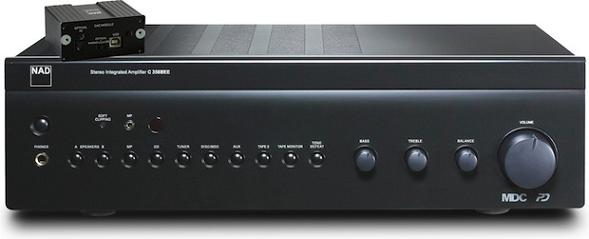The integrated amplifier market has seen a number of new
arrivals of late. We compare six mid-priced models
The variety of formats that people are using as their source
equipment to play music shows no signs of resolving itself just at the moment.
We currently have plenty of DACs and streamers vying for the top spot, while
the CD player battles on – fighting a valiant rear-guard action – and vinyl
continues to lure in new initiates in surprisingly increasing numbers. Against
this volatility, the integrated amplifier market has been a lot calmer.
Although some digital sources are showing ambitions towards input control as
they adopt many of the features of a preamplifier, for a great many of us, a
hi-fi system will be built around an integrated amplifier that receives your
sources and sends the amplified signal on to your speakers.
As befits a relatively stable category, the choice of
integrated amplifiers costing between $959.58 and $1,279.44 is impressively
substantial and includes offerings from a few brands who only a few years ago
appeared to have given up on two-channel models in pursuit of multichannel. All
of the models you see here should have sufficient power to work with speakers
at a roughly similar price point and all of them offer such niceties as a
remote control for the lazier among us and a headphone socket for those
personal listening spells. They also all boast a general level of build and
finish that is a step up over more entry-level offerings.
After these points of consistency though, things start to
get more varied for our sextet. The features on offer are bewildering and only
one of the designs here is a straight, line-only amplifier with no additional
input features. Of the other five, three are fitted with digital inputs and
four of them have phonon stages as standard – one of which even offers the
required gain for turntables fitted with a moving coil cartridge.
Feature count
All these bells and whistles count for very little if the
amplifier itself doesn’t sound any good, and that’s why, as ever, there’s no
substitute for listening to them in carefully controlled conditions. All six
are being judged on their ability with a standard line-level signal with their
extra features being taken into account once the dust has settled. Is
simplicity the way forward for a world-class amplifier or can you build an
all-star performer and keep the extra features on? Turn over to find out.
Arcam FMJ A19
Price: $1,039.5

Arcam FMJ A19
The newest amplifier in the Arcam two-channel lineup offers
a sensible 50W per channel, five line inputs and an MM phonon stage, but it can
also power members of the Arcam r family via an internal PSU.
Specifications
|
Continuous
power output (20Hz—20kHz at 0.5% THD), per channel
·
Both channels, 8Ω, 20Hz—20kHz: 50W
·
Single channel, 4Ω, at 1kHz: 90W
·
Harmonic distortion, 80% power, 8Ω at 1kHz: 0.003%
Inputs
Phono (MM)
cartridge
·
Input sensitivity at 1kHz: 5mV
·
Input impedance: 47kΩ + 100pF
·
Frequency response (ref. RIAA curve): 20Hz—20kHz ± 1dB
·
Signal/noise ratio (Awtd) 50W, ref. 5mV input: 80dB
·
Overload margin, 50mV at 1kHz: 20dB
Line and
AV inputs
·
Nominal sensitivity: 1V
·
Input impedance: 10kΩ
·
Maximum input: 4.6Vrms
·
Frequency response: 20Hz—20kHz ± 0.2dB
·
Signal/noise ratio (Awtd) 50W, ref. 1V input: 105dB
Outputs
Preamplifier
output
·
Nominal output level: 630mV
·
Output impedance: 230Ω
Heaphones
Output
·
Maximum output level into 600Ω: 4V
·
Output impedance: 1ohm
·
Load range: 16Ω—2kΩ
Accessory
power output
·
Using accessory power cable supplied, provides two 2.1mm DC
connectors: 6V, 1A
General
·
Mains voltage: 110–120V~ or 220–240V~
·
Power consumption (maximum): 350W
·
Dimensions W x D x H (including feet): 432 x 275 x 85mm
·
Weight (net): 8.5kg
·
Weight (packed): 10.2kg
·
Supplied accessories: Mains lead, CR108 remote control, 2 x AAA
batteries, Accessory power cable
|
Creek Evolution 50A
Price: $1,119.5

Creek Evolution
50A
Creek’s latest integrated is a compact affair with 55W on
tap, four inputs including an MM phono and the option to be fitted with a
bespoke tuner module to turn it into a receiver.
|
Specifications
·
Power output Into 8 ohms: >55 watts
·
Power output Into 4 ohms: >85 watts
·
Max current: >26 amps
·
THD: < 0.005% 20hz – 20khz
·
Frequency response: 10hz – 100khz +/- 2db (unbalanced)
·
Frequency response: 10hz – 50khz +/- 2db (balanced)
·
Slew rate: > 30 v per µs
·
Gain: 33.3db (x46) (unbalanced)
·
Gain: 27.0db (x22.5) (balanced)
·
Input sensitivity: 410mv
·
Max input voltage: 5.4v and 10.8v r.m.s.
·
Separation: -80db
·
SNR: >102db
·
Output impedance: <0.1 ohms @ 1khz
·
Outputs: 1 pair
·
Headphone output: Yes
·
Speaker selector: No
·
Ir input: Powered output for ir repeater
·
Operating voltages: 110v/230v switchable
·
Consumption (at idle): 20 watts
·
Consumption (at full power): 350 watts
·
Weight: 7.5kgs
·
Dimensions: 430 x 60 x 280mm W/H/D
|
NAD C 356BEE DAC
Price: $1,119.5

NAD C 356BEE DAC
Available as both a standard line-level integrated for $959.6
or as seen here with a clever DAC module fitted, the NAD has an impressive 80W
and no less than eight inputs including two tape loops.
|
Specifications
·
Dimensions (HWD, cm): 13 x 44 x 34
·
Power output (watts): 80
·
Finishes: 1
·
Publish To: B
·
Tuner presets: N/A
·
Speaker outputs: 2
·
Remote control: Yes
·
SW: No
·
USB in: No
·
Preamp out: Yes
·
Tone controls: Yes
·
Tape loops: 2
·
MC phono in: 0
·
Headphone out: Yes
·
FM: No
·
DAB: No
·
MW: No
·
Integrated: No
·
MM phono in: 0
·
Internet radio: No
·
Line level in: 8
·
LW: No
|